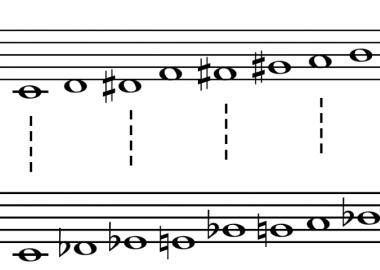An instrument examination can be a worrying prospect, whatever age you are, but remember: examiners aren't there to catch you out, they're there to give you an opportunity to show yourself what you have learned and to celebrate the progress you have already made.
‘Our message to candidates is ‘I’ll do my best to help you do your best’, and I can say with confidence that this message lies at the heart of our work. […] We should remember the reason so many of us learn to play an instrument or to sing. It’s about a love of music and the enjoyment and fulfilment that brings, all of which ABRSM supports wholeheartedly.’
An exam then is about having a positive, supportive experience whilst achieving a milestone in your learning. The exam should last no more than 15 minutes and can be completed at your choice of a large number of exam centres spread around the country.
You can find out more about exam centres and fees from ABRSM on their website. If you are participating in our Grade 1 Challenge then we will contact you personally to discuss arrangements for your exam.
The four sections of a Grade 1 exam all test slightly different skills. Together they cover all the aspects of music making and each section of the exam could make a big difference to your final mark.
The sections of the exam are:
- Three pieces or songs of your choice from the three lists
- Aural tests
- Scales and arpeggios
- Sight-reading/sight-singing
Choosing your pieces
For your grade 1 exam you will need to choose three pieces from three lists given by the exam board. You will get to know the pieces you choose inside out over potentially quite a long period of time so it is really important that you choose them carefully. Here are a few tips:
-
Choose pieces you like!
This sounds simple but it really is the most important part of the decision making process. If you know which pieces you like then those are the ones for you. Learning pieces you like will make your practice a lot more fun.
-
Contrast is good
Try to choose pieces that show a range of styles and skills. This will allow you to show yourself in the best possible light in your exam as well as adding some variety to your practice and the exam itself.
-
Don’t rush into a decision
There is no need to have to choose your pieces on the spot. If you can’t decide or you’d like to get to know a few pieces before making the decision, that’s fine. Having a look at several pieces before deciding will help you be sure in your decision.
-
Think twice about well-known works
There is absolutely nothing wrong with choosing well known pieces if you are sure you can do them justice but it is worth considering if they are right for you. By choosing well known pieces you run the risk of playing something the examiner hears in every exam or being compared to a long history of professional performances.
-
Playing it safe or being ambitious?
This is a tricky balance to get right and one that is important to think about. Within the pieces you can choose from there will inevitably be some you find easier and some you find harder. Taking on a challenging piece can be a brilliant way of pushing yourself to improve but three challenging pieces might make the exam more stressful than you bargained for. At the same time an easier piece can often give you the space to focus on musicality and expression where a big technical challenge might not. Think about how your three pieces balance these aspects.
Aural tests – developing your musical ear
Of all the sections of a grade 1 exam, the aural test section is a strong contender for the most dreaded.
Developing good aural perception skills is about developing your musical ear and strengthening the link between what you hear and what you play. The good news is that for Grade 1 the aural section is a tiny part of your exam as a whole. There are four tests included:
- To clap the pulse of a piece played by the examiner and to identify whether it is in two or three time
- To sing as ‘echoes’ three phrases played by the examiner
- To identify where a change in pitch occurs during a phrase played by the examiner
- To answer questions about two features of a piece played by the examiner
On the surface these tests are about testing your technical ability; how well can you listen, what do you hear, and can you reproduce and explain what you are hearing? This technical side is useful in itself because the ability to listen in detail and make sense of what you are hearing is vital to any musician.
But beyond the purely technical side of things, aural tests are equally important in that they focus on your general musical knowledge. It is impossible to really interpret a piece, perform it with understanding, and know where to look for inspiration without being able to put it in context. So try not to think of the aural tests as simply the scary part of your exam when you have to sing, remember that it is a chance to show off your general musical knowledge and understanding.








